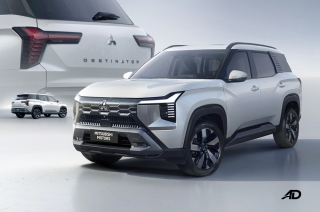
When browsing the spec-sheets of cars, you may find that there are two engine options listed. A more affordable option that makes less power is available. While a more powerful top-of-the-line variant eclipses everything else.
Do you need more power?

Picture this, let’s say you’re shopping for a Kia Picanto. The hatchback currently comes with two engine options. The smallest of the bunch is a 1.0-liter naturally aspirated 3-cylinder engine that produces 67 hp and 96 Nm of torque. The larger of the two is a 1.2-liter 4-cylinder motor that makes 83 hp and 121 Nm of torque. If you’re happy with the features of both and the only thing you have to decide on is the engine and the price, is going for the bigger engine option better?
Consider that you will have to pay over a P100,000 to get the bigger engine in our example, and consider that you will be getting less power and torque with a smaller engine. The reward for spending more money is that you get more capability. Ascertain how and where you will use the car. You can get away with a smaller engine if you’re not going to demand too much from the vehicle, but it’s good to have some overhead just in case you need that extra grunt.
However, do you actually need more power? The answer is, simply, it depends. If all you’re looking for is a car that can bring you from point A to point B, then the smaller engine will do you fine, but if you find yourself on the highway often or with a fully loaded cabin going up a steep incline, then perhaps going for the bigger engine could do you some good, it’s just that you have to be able to afford it.
During our testing, weaker engines had a harder time maintaining highway speeds. The engine speed was usually higher, and it took longer for the vehicle to match the speed limit. Put simply, at higher speeds, the less capable motor wasn’t as “stressed.” However, the smaller mills performed better in terms of fuel efficiency in the city. If you don’t need the power and find yourself stuck in traffic often, then a smaller motor is worth considering.

You also get more features to go with your car if you do opt for the premium engine option. On top of better tech features compared to the less expensive models, you also get a 4x4 system that is available only with the most powerful engine which is the case with the Toyota Hilux Conquest 4x4. There are a few models like the Ford Ranger that supply a 4x4 drivetrain option with its less powerful engine option, but if you’re fixated on a brand like Toyota, to get the more off-road capable machine, you have to get the most capable engine.
However, if we are simply talking about a car with a bigger engine, then a bigger car will need a bigger engine, and usually, you’re not left with much of a choice in terms of variants, so go big or go home.
Can you afford more power?

Most consumers will have to work around a budget, and not everyone can buy a car at the drop of a hat. The price premium for a larger engine can also be daunting, or a small step up in price. Take, for instance, the Toyota Vios. There are currently two options in the lineup: a 1.3-liter and a 1.5-liter 4-cylinder gasoline engine. The top-of-the-line 1.3-liter Vios costs P901,000, while the best-equipped 1.5-liter costs P1,020,000, and tops out at P1,035,000 with the White Pearl Crystal Shine color option. Going up from a 1.3-liter to a 1.5-liter will cost you around P100,000, but you do get more features to go with that engine upgrade.
If we compare the 1.3 E CVT variant of the Vios with the 1.5 G CVT, the difference is P69,000. If we’re strictly talking about the engine, you’re paying about P70,000 more for an 8 hp and 17 Nm increase, which is a fair increase, and might not reflect too much in monthly financing deals and cash purchases.
Is a smaller engine capable?

The answer is: It depends. If we’re talking apples to apples, like in the case of the Kia Picanto and the Toyota Vios, then the smaller engine will be less capable. However, we cannot deny that Toyota’s 1.3-liter mill is still a good performer. The same can be said with the Mazda3’s 1.5-liter SkyActiv-G engine, in comparison with the 2.0-liter option found in the Premium variants of the Sportback or Sedan. The engine gets the job done, but more power is still more power. The drive is better when you don’t need to squeeze every bit of performance out of a smaller engine.
That being said, a small engine will get the job done. The larger one will, too, but with a bit more excitement and capability.

However, we cannot deny that turbocharged engines have rendered the phrase: “there is no replacement for displacement” obsolete. Smaller-sized motors are literally getting a boost in power and torque over their larger, naturally-aspirated counterparts. The Honda Civic with its 1.8-liter naturally-aspirated engine makes 139 hp and 174 Nm of torque, is plenty capable, but that pales in comparison with the turbocharged 1.5-liter with 171 hp and 220 Nm of torque of the RS Turbo, but that engine option comes at a premium with about P500,000 separating the 1.8 E CVT and the 1.5 RS Turbo. The weaker engine option is still good enough. Don’t discount that it can still run the car and get you from point A to point B, but if you want excitement, then consider the more capable mill.
So do you go for it?

Now, before you pull the trigger on the most expensive option in the lineup, first assess whether you can afford the car that you want. It’s free to dream, but without the money to back it up, you can’t drive off the lot unless you opt for a test drive, and even then you only have a few minutes to enjoy.
If you do have the money and/or the budget, consider that you can put the cash you save into other things. Just set a minimum level of expectation with your car. If you’re gunning for the most capable engine, then be prepared to shoulder other expenses like maintenance and fuel. It may not always be the case, but the maintenance and servicing costs for a more powerful engine can get a bit pricey. Budget more fuel as well, because you may consume more fuel since your engine is less efficient in traffic, or you keep driving it around because you enjoy the power.
In any case, reflect and ask yourself where the car will be used most often. If the city will be your main driving ground, then a smaller engine will be enough and will save you a lot of money at the dealership and at the fuel stations. If you find yourself on the highway a lot, then perhaps a bigger engine will suit you better. If the car comes with a better set of features and a more powerful engine, it’s worth considering the more premium option. In any case, this is just a question of need, and if you want it, you want it.
Latest Features
-
Tire tread patterns: What they are and why they matter to your car / Tips & Advice
Tire tread patterns aren’t just for looks; they also determine traction, handling, and overall performance on the road.
-
Five things to check on your car before driving during the rainy season / Featured Article
Planning to drive in the rain? Make sure to inspect these five vital parts of your car before hitting the road.
-
What we can expect from the upcoming Mitsubishi Destinator / Featured Article
The Destinator debuts this July 23, and according to Mitsubishi, it’s more than just an XForce with extra seats.
Popular Articles
-
Cheapest cars under P700,000 in the Philippines
Jerome Tresvalles · Sep 02, 2024
-
First car or next car, the Ford EcoSport is a tough package to beat
Jun 18, 2021
-
Car Maintenance checklist and guide – here’s everything you need to know
Earl Lee · Jan 12, 2021
-
Most fuel efficient family cars in the Philippines
Bryan Aaron Rivera · Nov 27, 2020
-
2021 Geely Okavango — Everything you need to know
Joey Deriquito · Nov 19, 2020
-
Family cars in the Philippines with the biggest trunks
Sep 20, 2023
-
Head to head: Toyota Rush vs. Suzuki XL7
Joey Deriquito · Oct 28, 2020
-
Why oil changes are important for your car
Earl Lee · Nov 10, 2020
-
2021 Kia Stonic — What you need to know about it
Joey Deriquito · Oct 16, 2020
-
Top 7 tips for buying a used car in the Philippines
Joey Deriquito · Nov 26, 2020




